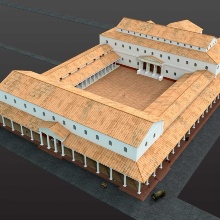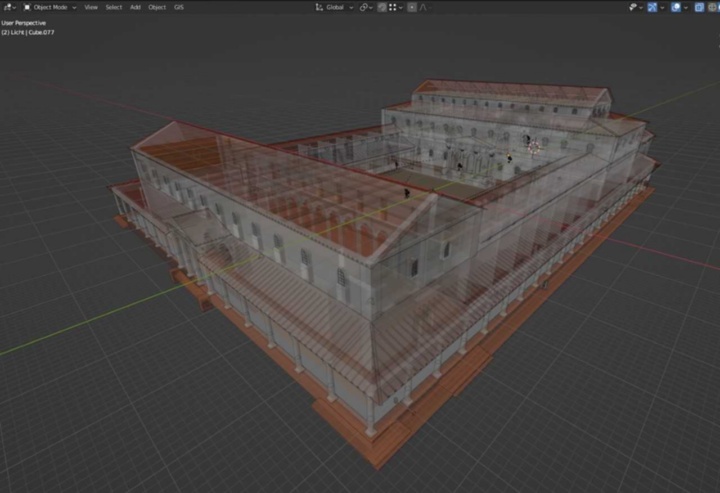Election campaign, ceremonial address, or information session – thanks to microphones and digital technology, speeches reach a large audience today. How did people make themselves heard before technical amplifiers were invented? How did public speeches work in Ancient Rome or in the Middle Ages? This is what scientists at the Institute of History at the University of Stuttgart are researching in cooperation with the Lobdengau Museum in Ladenburg.
The Lobdengau Museum and the Department of Ancient History at the Institute of History at the University of Stuttgart are working together on a project that is funded by the German Federal Cultural Foundation within the framework of the funding line “Dive in. Program for Digital Interactions”. The funding was granted for the year 2022. The aim is to create a digital infrastructure for the museum. For this purpose, the researchers are using digital means in order to make two central buildings of the Roman and medieval city of Lopodunum, today Ladenburg, audible and a real experience for visitors: the archaeologically well-comprehensible basilica in the Roman forum along with the assembly hall of the curia, and the medieval Sebastianskapelle (Sebastian’s Chapel), which was built in the 11th century and was used for a long time as the court chapel of the bishops of Worms. The scientists are installing 3D technology, such as screens and tablets, in the rooms. This allows museum visitors to see and hear, in visual and acoustic scenarios, different reconstructions of the curia’s assembly hall as well as the three most important historical construction phases of the Sebastianskapelle around 1300, 1500, and after 1737.
Visitors can explore the reconstructed rooms not only visually. The combination of vision and sound also gives them the opportunity to understand the historical acoustics of the rooms through various audio examples. Short verbal contributions, such as excerpts from speeches, sermons and addresses, which can be narrated interactively by the visitors themselves, are a highlight of the exhibition. A visitor’s voice can be digitally linked to the spatial conditions of the time, and a specially designed computer program creates a sound sample from it. Visitors can hear their own voice in the virtually constructed rooms and thus experience personally what requirements the political officials and actors of the time had to meet in public speaking situations. They can also see and hear how the long tradition of technically unamplified public speaking ended when sound-amplifying microphones were introduced in the late 1920s.
The researchers will have designed and set up the exhibition by the end of 2022. It is expected that the museum’s new digital means will be available to visitors starting from spring 2023.
Information about the project:
The project is being funded within the program “NEUSTART KULTUR” (“Culture Reboot”), which was set into motion by the Commissioner for Cultural and Media Affairs (BKM) of the federal government. The project aims to make specialist scientific knowledge about the acoustic requirements for speakers in the pre-modern era accessible to a wider public. The researchers plan to present their findings within the framework of the exhibition next year.
| Contact | Prof. Dr. Peter Scholz, Historisches Institut der Universität Stuttgart, Abteilung Alte Geschichte |
|---|



